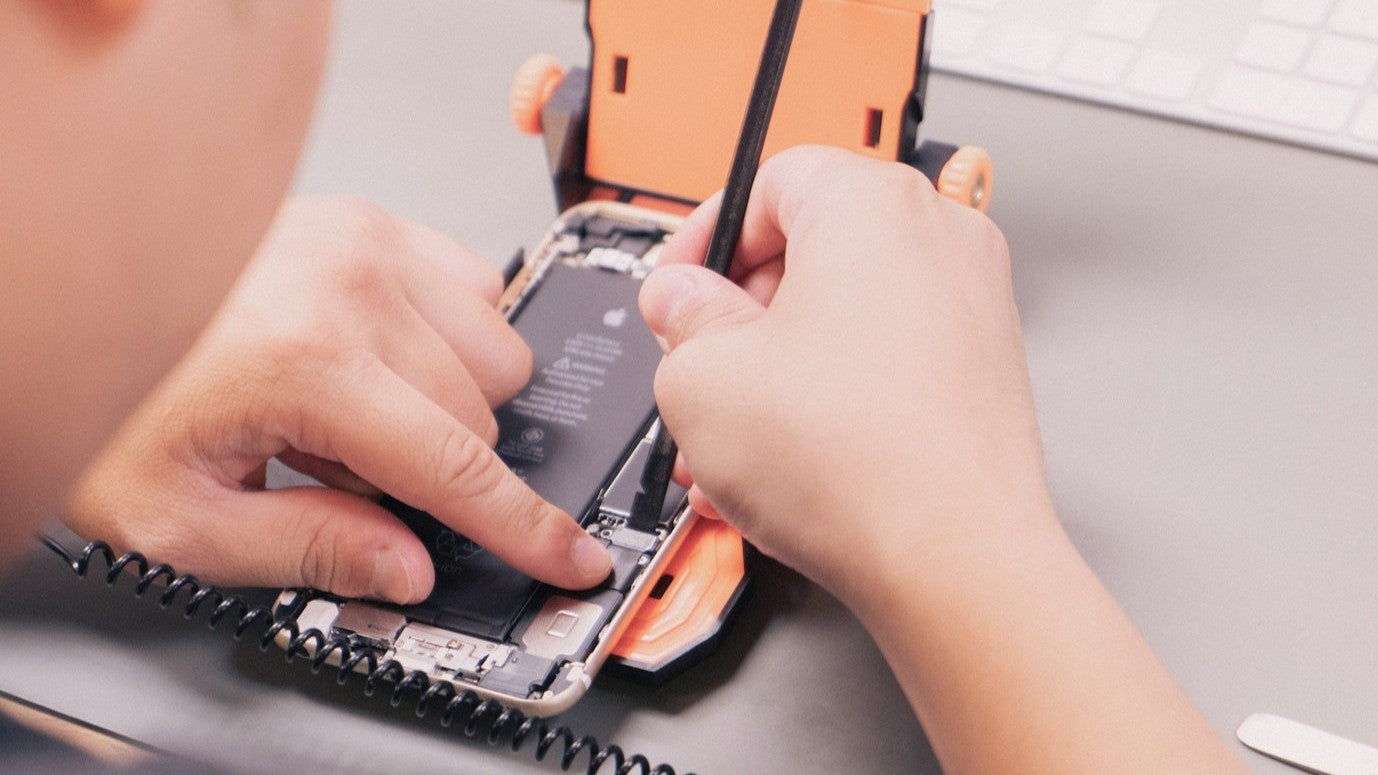At Imfixed, we take pride in offering high-quality and express iPhone repairs tailored to meet the needs of every customer. We know how vital your iPhone is in your day-to-day life, and we make sure you’re never without it for long. Whether you’ve smashed your screen or your battery is on its last legs, we provide a wide range of reliable repair solutions that’ll have your iPhone running like new again, and all handled by professionals you can trust.
How much does it cost to repair an iPhone?
iPhone repair costs vary depending on the model, the type of damage, and the components involved. Let’s break it down and explain what you can expect when repairing your iPhone with us at Imfixed.
iPhone Screen Repairs
Cracked screens are the most common issue we see. Whether you’ve dropped your iPhone 8 or your iPhone 15 Pro Max, a damaged screen affects both the usability and safety of your device. At Imfixed, our screen replacements take just 30 minutes, using only the highest quality, QC-tested parts. We back all screen repairs with a 12 months warranty that covers touch sensitivity, LCD faults, and more.
Here’s a look at our screen repair prices:
-
£30 for the iPhone SE (2nd Gen)
-
£40 for the iPhone 11
-
£35 for the iPhone XS
-
£40 for the iPhone XR
-
£35 for the iPhone X
-
£30 for the iPhone 8
- £35 for the iPhone 8 Plus
You won’t find better value or faster service in Bolton or Manchester. We're known for unbeatable pricing and trustworthy repairs.
iPhone Battery Replacements
Over time, iPhone batteries wear out, which leads to slow performance and shorter usage times. Our battery replacements take just 30 minutes and restore your phone’s power, reliability, and charge retention. We only use premium-quality batteries that meet safety and performance standards.
Battery replacement prices:
-
£35 for the iPhone X
-
£35 for the iPhone 8
- £45 for the iPhone 8 Plus
If your phone is dying quickly or turning off unexpectedly, we’ve got you covered.
Liquid Damage Diagnostics & Repair

Water damage is unpredictable and can affect several internal components. At Imfixed, we begin with a full liquid-damage diagnostics test priced at just £15. Our experts will open your iPhone, clean out any liquid, and assess the damage. Further repair costs depend on how many parts need replacing, and this process typically takes up to 48 hours.
Charging Dock Repairs
If your iPhone won’t charge properly or the port feels loose, dirt and wear could be the cause. We offer charging dock cleaning and repair. We'll clean or replace the charging port to restore full functionality.
Common FAQs
1. My iPhone screen is cracked. How do I fix it?
Don’t worry, come to us at Imfixed. Our techs will safely remove the damaged screen and install a brand-new one using tested, high-quality parts. It only takes 30 minutes.
2. What should I do if my iPhone won’t turn on?
Try a different charger first. If that doesn’t work, perform a force restart. Still no luck? Pop into our store for a diagnosis. It may be a battery or hardware issue, and we can fix that.
3. My iPhone camera isn’t working. Can you help?
Absolutely. We’ll check the lens, test the camera, and replace the faulty module if needed, all using genuine-quality parts.
4. My iPhone isn’t charging. What should I do?
It could be a faulty cable, blocked port, or even battery damage. Visit Imfixed, and we’ll quickly identify and resolve the issue.
5. How do I fix water damage on my iPhone?
Turn the phone off immediately and bring it to us. Our technicians will handle the rest, from drying it out to replacing any damaged parts.
Why Choose Imfixed?
Unlike other stores or official services that charge a premium, we offer affordable, fast, and dependable repairs, all with genuine parts and excellent aftercare. Our services are trusted throughout Bolton, Manchester, and beyond. Don’t risk it with unverified shops or overpriced alternatives, come to Imfixed and get it sorted right the first time.
Looking for reliable, fast, and affordable iPhone repair?
Visit us at Imfixed today or book repair online or contact our team for a free quote. We’ll get your iPhone working like new, without breaking the bank.


Share:
Is Your Phone Getting in the Way of Your Workout Goals?
Tech Tips For A Longer Lasting Battery